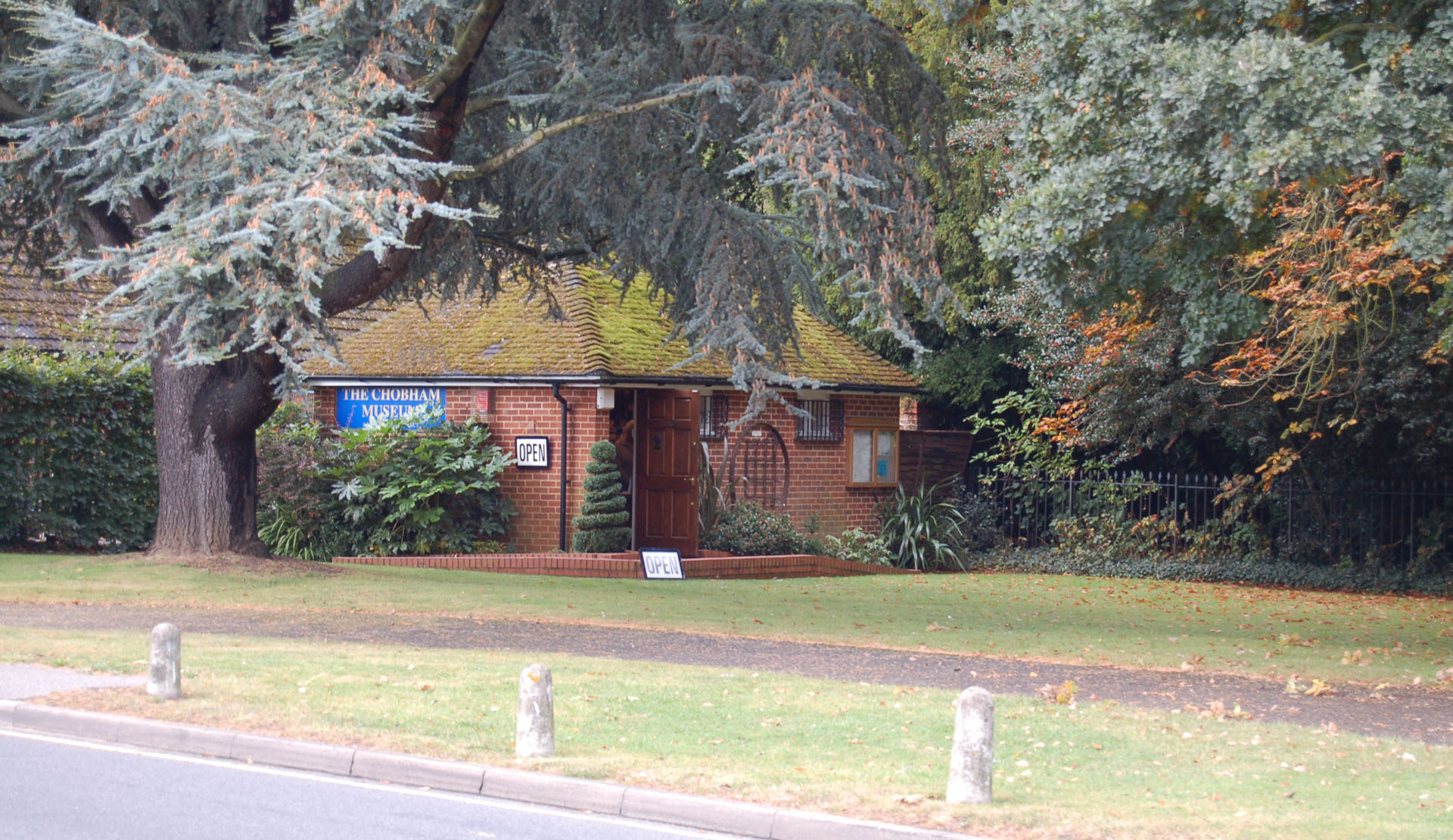The following is extracted from John Baker’s ‘The Seeing Eye’ article and Joy Mason’s book “CEBBA’S HAM; THE STORY OF CHOBHAM”.
The Old Workhouse
A building which has played an interesting part in the life of the village is the Old Workhouse, now known as Jubilee Cottages, situated on the southern side of the Red Lion Road at the Burrow Hill end.
In the 1780s, the inhabitants and parishioners of Chobham enclosed 2 acres of common land belonging to the Manor of Chobham and built a house for the reception of the poor of the parish. A workhouse was first built in 1786 and housed thirty to forty paupers, 25 women and 15 men. But two years later it was burnt and then rebuilt in 1790.
Workhouse by John Baker.GIF (15616 bytes)By 1801 the number of residents dropped to 27, but by 1832 had increased again to 32. William Stevens was the workhouse keeper and in 1832 it is recorded that he received £21.17.9 for “one month’s paupers in the house”.
The paupers who came to the workhouse in destitution were despised and shunned by the rest of the village. Being committed to the workhouse was the greatest indignity that any one could suffer. If the paupers were capable of work they worked the land and were not allowed to leave until they had worked off their debt to the parish. Orphaned or abandoned children were handed over to childless couples as nothing more or less than slaves. This continued until the 1930s. Older parishioners still remember and talk of the plight of these poor people who had no one to care for or about them.
The Poor Law Reform act of 1834 changed the responsibility for caring for the poor from the parishes to boroughs. Levies were raised on the parishes. Chobham was part of the Chertsey Union and the local poor house was at Ottershaw. Thus Chobham was no longer required to provide a parish workhouse. A request was made in 1836 to the Poor Law Commissioners to obtain authorisation to sell the workhouse, two acres of land and three small cottages. The Guardians of the Poor of the Union of Chertsey consented to the sale; the proceeds were £350.
A farmer who occupied the premises in 1853 was bought out and the building used as a hospital for the great camp of soldiers on Chobham Common. It was then bought by the Rev. Tringham and occupied by Robert Harvey. Frederick Benham bought it in 1883 for £600 — it is still owned by a Benham.
The land was gradually developed over the years. The workhouse itself was converted into three cottages and named Jubilee Cottages in commemoration of Queen Victoria’s jubilee.
If you click on ‘workhouse lands’ on the left you will find a more detailed description of how the area was developed.
More information about Workhouses and the Poor Law can be found at http://www.workhouses.co.uk/
